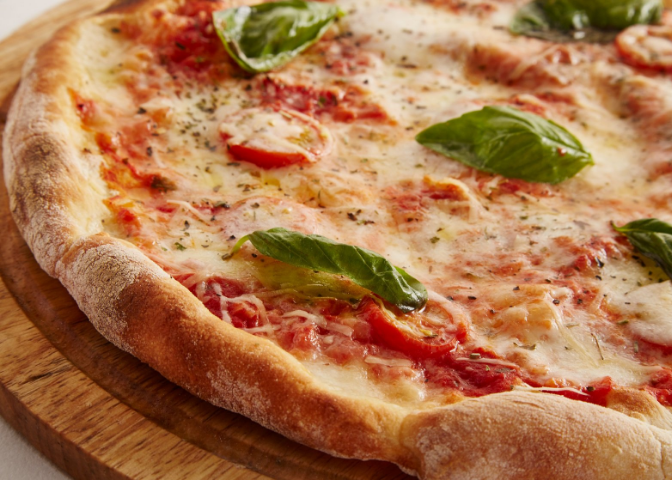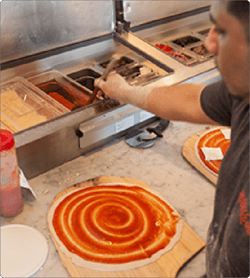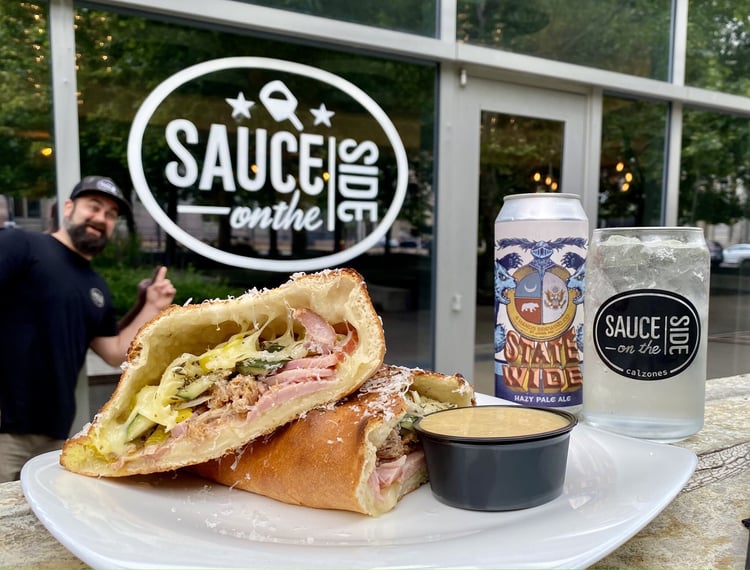Call Sales: +1 (833) 437-3835
Call Sales: +1 (833) 437-3835
Robert Meador | November 3, 2022 |

Everyone knows that Americans love pizzas. Each of our major cities contain hundreds of pizzerias, and even most rural areas have two or more options to satisfy their pizza cravings. Owners understand this and are looking for a way to compete in a very crowded pizza industry. When customers have so many options, pizza shops have to be able to find a way to set themselves apart from the competition. One effective way to do this is to incorporate a restaurant exclusive into the menu.
Many long-time owners may roll their eyes at this and think “We’ve heard this already.” Perhaps, many of you have tried to introduce new ingredients, but were ultimately discouraged as patrons preferred the usual staples: pepperoni, cheese, sausage, etc. However, the pizza industry is changing. A majority of pizza goers have stated in recent surveys that a main focus for them is a variety of ingredients and to find an exclusive experience.
The “Millennial foodie,” a trend noted years ago, is now a powerful force in the pizza industry. Especially in trendy urban markets like Austin, Nashville, Denver, and others, more and more urbanites are expressing a desire to try local restaurants’ exclusive options.
Food is once again a prominent topic in Millennial and Gen-Z conversations. They discuss exclusive local foods just as they do local music or local art. Savvy pizza restaurant owners need distinct, attractive options to enter into this conversation—and ultimately—to profit.
So how do you go about incorporating an exclusive offer to your menu? First and foremost, owners should avoid any kind of “gimmick.” Having customers view a new pizza option as a joke or a stunt may garner some short-lived attention, but it is not a path to long-term relevance.
Instead, owners should rely on gourmet pizza ingredients to elevate their menus. By utilizing sound gastronomic theory and high-quality ingredients, owners can generate new-found interest in their restaurant.
But what about the cost? All competent business owners are constantly weighing the potential benefits of new ideas against their associated costs. Higher quality or specialty ingredients will be more expensive than their alternatives; however, these new gourmet options can also be a source of increased revenue. The calculus will be specific to each pizzeria’s specific circumstances.
Once an owner opens their mind to gourmet ingredients, all kinds of options are available. Rather than viewing pizza as a set or established form, viewing pizza as a vehicle for improvisation and creativity will be helpful to branching out into the countless possibilities. For example, pizza can incorporate gourmet ingredients in the base, the sauce, the cheese, and the toppings.
The base can be adapted in many different ways. Most people are familiar with the common variations of the flour dough base, such as thin crust, deep dish, New York style, Detroit style, Chicago style, and others. Many gourmet pizza makers go beyond the usual flour dough and use vegetable options like cauliflower or different bread options like sourdough. 
The majority of pizzas are made using tomato sauce, which gives it the nice acidity to counterbalance the cheese. Some gourmet alternatives to tomato sauce include white garlic sauce, pesto, hummus, and buffalo sauce. As with the traditional tomato sauce, you will need to determine the acidity profile of these sauce options and decide which other gourmet elements, specifically cheese, you will need to balance or contrast.
Cheese is often the star of any quality pizza. Nonetheless, a pizza restaurant can include new gourmet options for cheese or forgo cheese altogether (it can be good, we swear!). Many gourmet pizza recipes include goat cheese and ricotta as their form of cheese. The goat cheese gives the pizza a sharp, distinctive taste, and the ricotta provides a fresh, slightly nutty flavor. For cheeseless options, pizza makers often turn to black bean sauce or vegan substitutes. This is also a great way to incorporate vegan pizza options into your menu!
When people hear “gourmet pizza,” the majority of them immediately think of toppings. Pizza customers are most familiar with various toppings and combinations in which to customize their order. Therefore, in regards to gourmet pizza toppings, you may have the most wiggle room to be creative. Gourmet pizza shops often use less common meats and vegetables as toppings. For example, gourmet pizza can include lamb, prosciutto, pork, and more. Vegetables can include asparagus, pumpkin, eggplant, etc. Toppings truly are an aspect of the pizzeria that allow you to go wild, both in flavor and in carving out an exclusive pizza experience for your customers.
Calzone restaurant chain Sauce on the Side created an entire concept centered around unique flavor combinations and top-of-line ingredients. Their team makes all menu items from scratch, ensuring freshness and quality are at the forefront of every bite of their food. Ingredients spanning applewood smoked bacon to mascarpone cheese combine to make the brand’s specialty calzones truly memorable meals. 
With all the options out there, how can you know which you should choose? It can be overwhelming in trying to put together a gourmet pizza menu that embodies your restaurant’s brand and culture. To help with this, consider your location and your customer base.
Regional pizzas can be incredibly popular. By “regional” consider the overall culture of food in the area. For example, in Southern Texas, land of the esteemed Tex-Mex food culture, I ate a divinely delicious chorizo pizza that embodied the culture of food in the region. It was both delectable to eat, and it gave me a sense of uniqueness, of exclusivity, that customers are increasingly gravitating towards. I will always remember that pizza, and I will always tell people in the Austin, TX area that they should go and try it out. Other examples could include an Indian Tandoori chicken pizza or Middle Eastern lamb kebab pizza if there is a potential interest in Indian or Middle Eastern food among your customer base.
If you are still reluctant to take a chance on a gourmet exclusive pizza at your restaurant, you can always rely on the more popular gourmet pizza options that have proven to be successful. Some of the most common gourmet pizzas are the Margherita pizza, the supreme pizza, the Neapolitan pizza, and the BBQ chicken pizza. Each of these options have proven to be consistently popular in pizzeria diners across the nation.
In such a crowded market, the prevailing wisdom is often to buckle down and stick with what works. However, in the pizza industry, the majority of patrons are looking for a unique, exclusive experience, not a generic, could-be-made-anywhere pie. Going out on a new branch can be nerve-racking, but as discussed, the customers’ stance is clear and the tract record of quality gourmet pizza is clear. Pizzerias need to stand out, or they will be left behind.